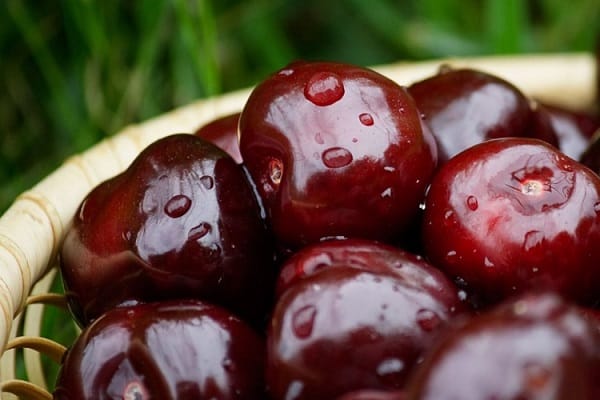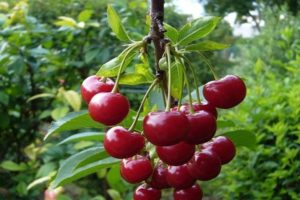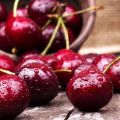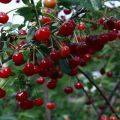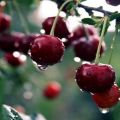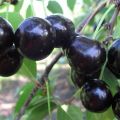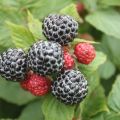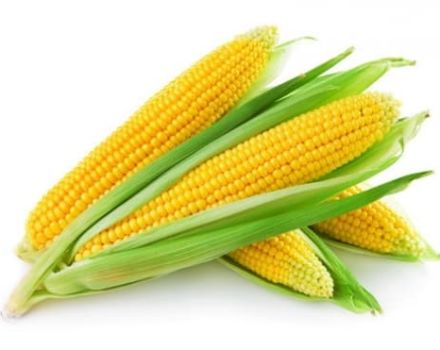Description of varieties of black cherry Morel, Rossoshanskaya and Shokoladnitsa, planting and care
Despite the fact that many varieties of cherries have been bred, which take root and bear fruit not only in Ukraine, Moldova, southern regions of Russia, but also in the central regions, black cherry does not give up its positions. From sweet and sour berries, compotes are closed for the winter, fragrant jams and preserves are prepared, which turn out to be much tastier than from cherries. Voronchikhin managed to breed hybrid cherries with large juicy fruits by breeding different types of garden culture.
Black cherry varieties
The tree grows 4–5 meters in height and forms a wide-pyramidal crown. Leaves attach to thick petioles, flowers appear in the third year of planting. At the end of July, dark-colored berries ripen on the branches of black cherry, weighing about 6 g. More than a dozen varieties of this variety of garden plant are cultivated.
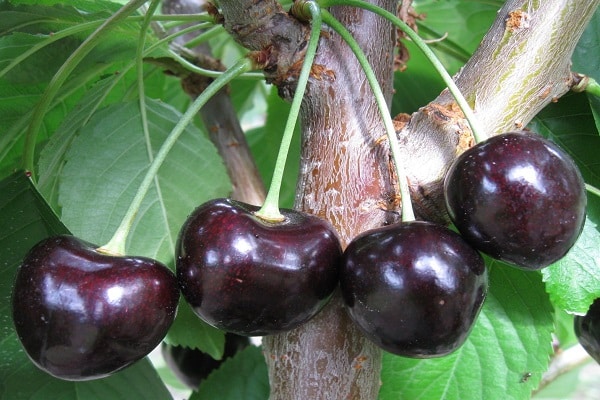
Cherry Vladimirskaya
In the Middle Volga region, in the central regions in the North-West of Russia, in the Volga-Vyatka region, a tall and self-infertile variety, Vladimir cherry, has been planted for a long time. The tree tolerates cold winters normally, but the frosts, which often come in May, crumble and die flowers.
Berries of a black-red hue with dense fragrant pulp ripen by the end of July. Small bones are well separated. With proper care and favorable weather, about 20 kg of sweet and sour berries ripen on the tree. The plant is often affected by fungal diseases, bears fruit up to 15 years, if plant it next to cherry treesthat bloom at the same time.
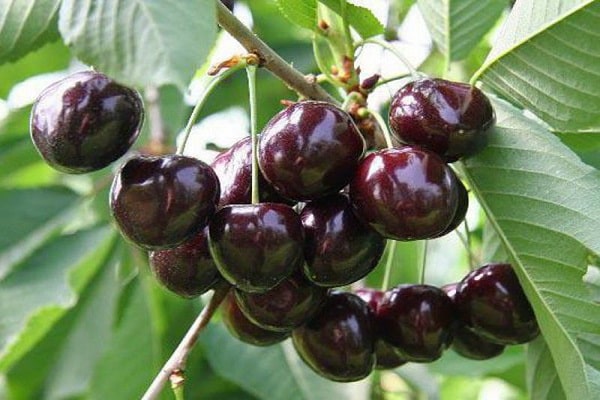
Griot Rossoshansky
In the North Caucasus and the Lower Volga region, a stone fruit variety is well established, which is not afraid of rot, gives a stable yield, which increases if other black cherries grow nearby. 15-16 kg of berries are harvested from a tree about 6 meters high in the last days of June, which differ:
- sweetish taste;
- beautiful dark skin;
- juicy and tender pulp;
- garden scent.
Griot Rossoshansky cherries are poorly transported, but they are suitable for harvesting jams and compotes. The plant is often exposed to coccomycosis; repeated spraying with fungicides helps prevent the onset of the disease.
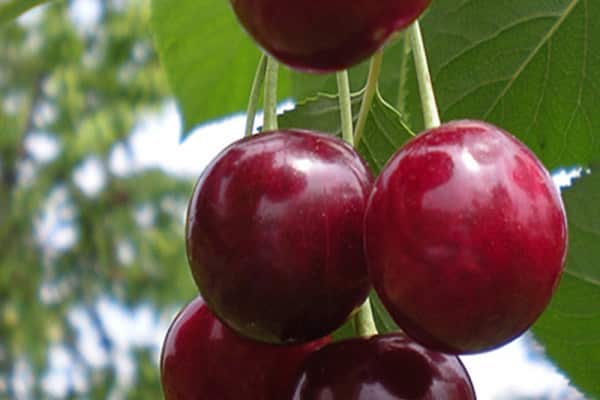
Cherry Zhukovskaya
Trees of this variety begin to bloom and delight with large berries already in the fourth year after planting. The pulp of the fruit is colored black. To the merits cherries Zhukovskaya include:
- high yield - up to 3 buckets from a tree;
- excellent taste;
- excellent transportability;
- resistance to major diseases.
One berry weighs about 7 grams, and the tree bears fruit for two decades, but the inflorescences crumble even with slight frosts.
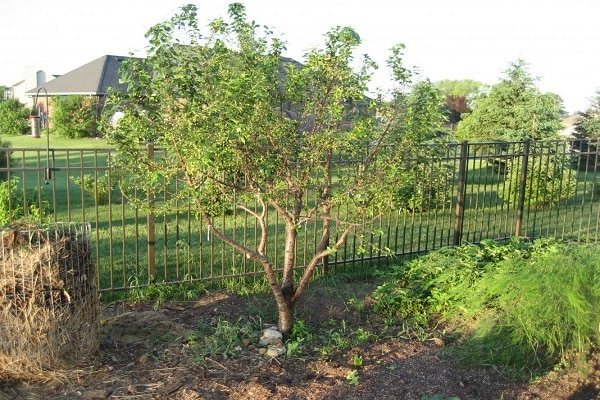
Rossoshanskaya Black
And in the favorable climate of the North Caucasus, the Lower Volga region, and in the harsh conditions of Siberia and the Trans-Urals, a self-fertile variety of stone fruit culture - Rossoshanskaya Black cherry - takes root. The first berries appear on a three-year-old tree, an adult plant pleases with a yield of 15 to 25 kg. Although flowers are formed late, the fruits ripen in June.
Cherries look very beautiful, have a rich brown color, and have a very pleasant pulp. From berries that are normally transported, aromatic compotes are obtained.
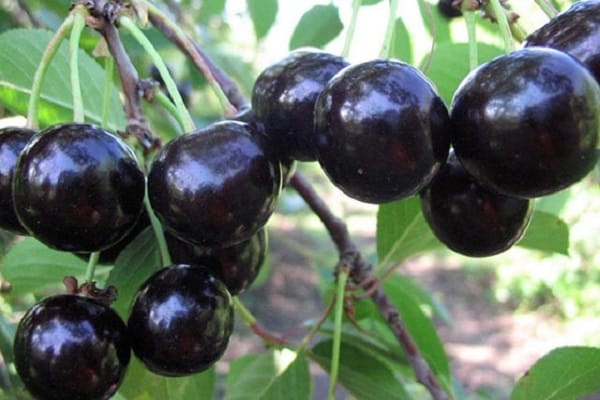
Black Large
The hybrid cherry, which appeared not without the participation of the Russian breeder Voronchikhin, is a short tree with a dense crown and long shoots. The bark of the plant is dark brown in color, and the leaves are glossy, small teeth are located at the edges.
A large cherry berry has:
- thin skin;
- juicy pulp;
- saturated color;
- sweet and sour aftertaste.
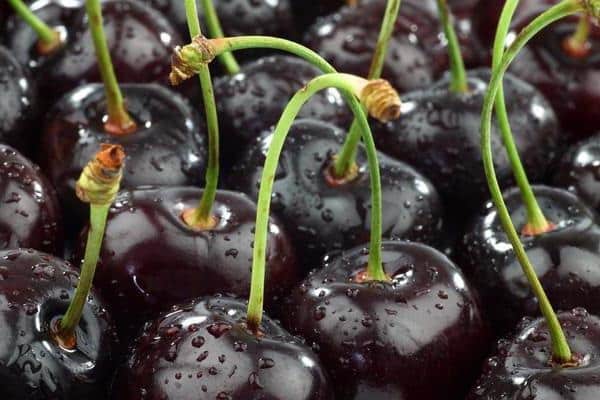
Some specimens weigh 8 g. The tree begins to bear fruit from the age of four. Cherries ripen in the last days of June, do not spoil in the refrigerator for about 2 months and are used for freezing, drying, making compotes and jams.
The variety has not only advantages but also disadvantages. The tree lives less than 20 years, is affected by fungi.
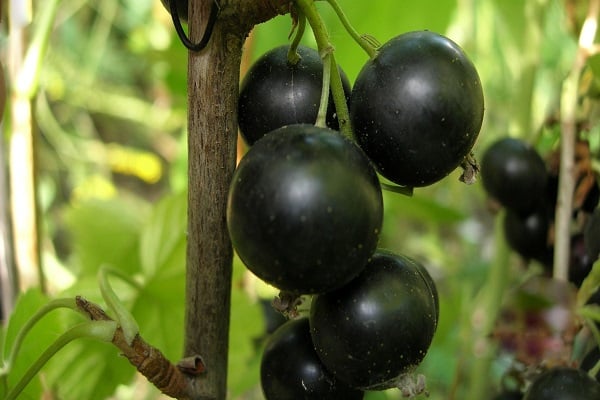
Morel Bryanskaya
This cherry variety was bred in the Netherlands over 2 centuries ago. Depending on the variety, it can grow both as a shrub and as a tree with a lush crown. Morel is planted in dachas and gardens. An unpretentious culture tolerates cold winters well, does not suffer from fungal diseases, from most pests. Such varieties are sprayed with insecticides only once a season.
Morel Bryanskaya is grown on an industrial basis in the Central region.
The description of the variety interested farms. Cherry pleases with sweet berries that are dark red in color and have a dense pulp. Plucking fruits, pruning branches is quite convenient, since the tree does not stretch up. The plant blooms at the end of May, when frosts are already rare, so it will thank you with an excellent harvest for proper care.
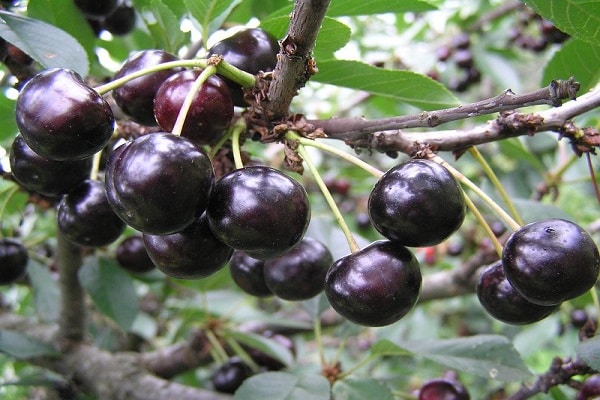
Consumer goods Black
The low, beautiful cherry, whose slightly flattened berries seem to be varnished, does not lose its popularity. The variety called Shirpotreb Black was bred in the nursery founded by Ivan Michurin at the beginning of the last century.
The first fruits on the tree are tied in the second year after planting in the ground. In July, cherries ripen, differing:
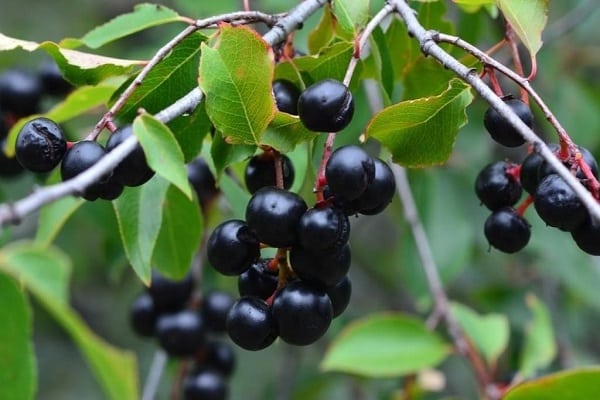
- tender and firm pulp;
- sweetish taste;
- the presence of sourness.
The berries are completely black in color, weighing about 4 g, and they are located on a long stalk. The yield of the variety increases if cherries grow nearby - Vladimirskaya or Zhukovskaya. The tree does not tolerate cold winters, suffers from frosts in May.

Memory Voronchikhina
When the Effective and Prima were crossed by Russian breeders at the beginning of the two thousandth, a new variety of black cherry was bred, named after one of them. A tree up to 5 meters high has a spreading crown, straight shoots with large buds, thick oval-shaped leaves.
Dark cherry berries weighing a little more than 5 g, the flesh has the same color, dense skin. The bone is difficult to separate. Variety Pamyat Voronchikhina bears fruit in the third year, under favorable conditions on the tree from 2 to 3 buckets of berries ripen. Cherry is cultivated in the Central Black Earth Region. In cold winters, the plant practically does not freeze, it is rarely affected by moniliosis. The trees bloom early, the berries ripen by the end of June.
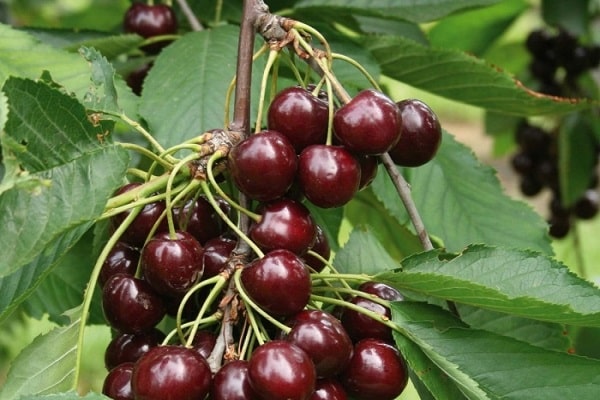
Chocolate girl
Several decades ago, Russian scientists, based on the two varieties Lyubskaya and Shirpotreb, bred a cherry that is not afraid of frost, bears fruit from the age of three, has high transportability, which allows it to be grown for industrial purposes.
The berries are dark red, almost chocolate in color, contain more than 12% sugar and less than 2% acid. The bone is easily separated from the pulp.
The tree is about 2.5 m high and has a compact and attractive crown; it blooms after May 15. To the merits cherries Shokoladnitsa include:
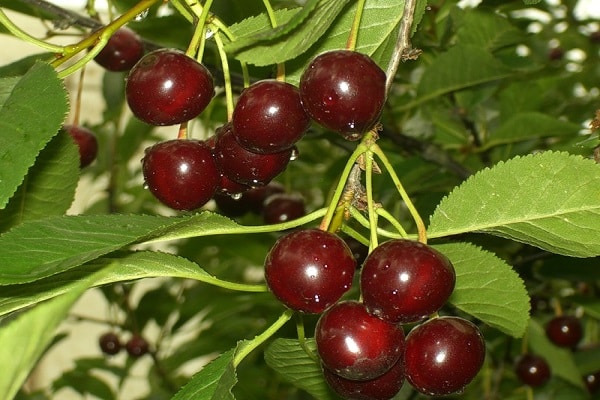
- drought tolerance;
- self-fertility;
- excellent presentation;
- pleasant taste.
The plant feels good on illuminated slopes, adores fertile light soil, does not tolerate acidic soil, where water stagnates. The variety often suffers from diseases that affect stone fruit crops.
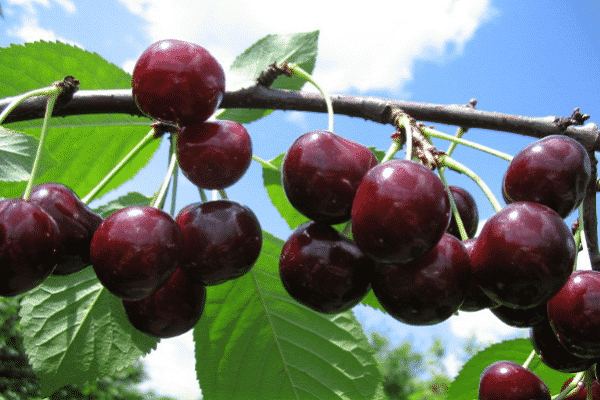
Anthracite
Small cherry trees with a spreading crown adorn summer cottages and suburban areas in the central regions of Russia. Berries in the form of a heart and black as coal weigh up to 5 grams, are valued for their sweet and sour taste, for the fact that the bone can be separated from the juicy pulp without problems. Cherry Anthracite cannot boast of a high yield. The fruits ripen in the last decade of July, are suitable for making compotes and jams, do not wrinkle during transportation, do not lose their presentation.
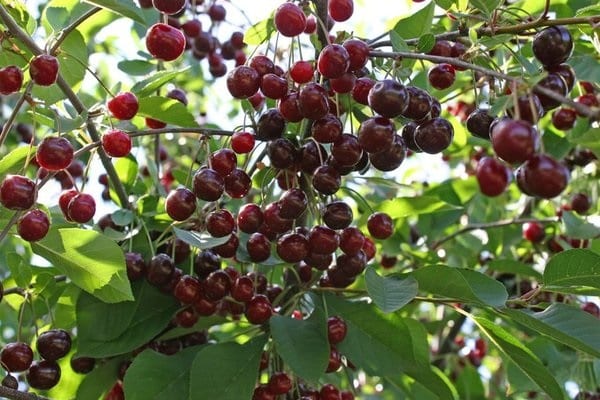
Features of planting black cherries
So that stone fruit crops are not affected by diseases, please with sweet and large berries, agrotechnical requirements for care and planting must be observed. Be sure to pay attention to the choice of a place where the black cherry will be comfortable. Trees do not like shade; they must be protected from drafts and piercing winds.
Seedlings are sent to the prepared soil at the very beginning of spring, until the buds wake up after the winter cold. Having dug up the ground, organic matter is introduced, it needs about 15 kg per sq. m. The pit must be made to a depth of 50-60 cm, in width - up to a meter.
Before planting, the tree is sent to the water with "Kornevin", where it is kept for about 10 hours. Cherry varieties should only be selected that are suitable for cultivation in the region.
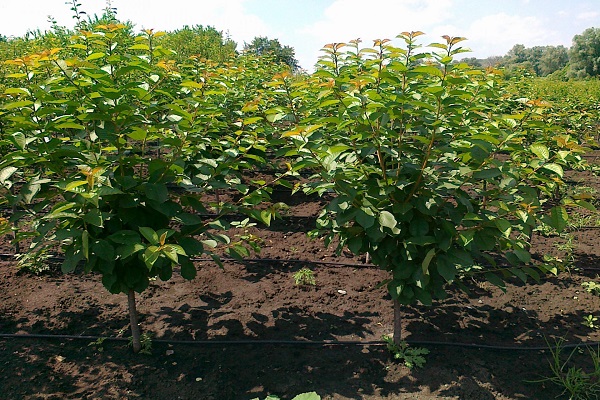
For the seedling to take root:
- A peg about 1.5 m high is driven into the pit.
- Ash, soil and humus are placed on the bottom.
- The tree is placed in a small mound, leaving the neck 5 cm above the soil surface.
- The roots are sprinkled with earth and watered.
- The seedling is tied to a peg, the soil is compacted near it.
The soil is covered with compost or humus with a layer of about 70 mm. Thanks to mulching, moisture will evaporate less.

Care
In order for cherries to develop quickly, to please with large and sweet berries, you need to take care of them. The land around young trees should be weeded and loosened regularly. They need moisture more than adult plants. In case of drought, seedlings are irrigated three times a month.
Cherries that are already bearing fruit are watered:
- with the formation of ovaries;
- when laying new kidneys;
- before the onset of winter.
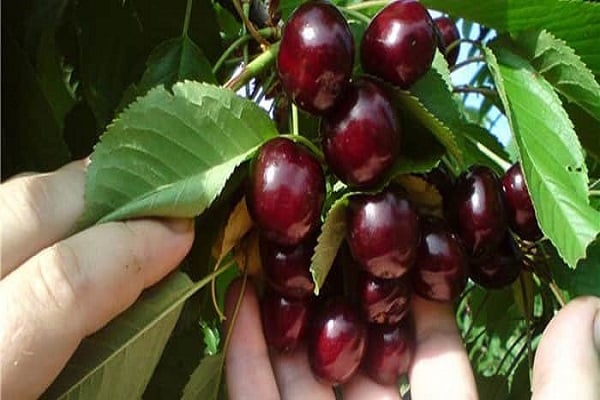
Every 2 years the trees are fed with organic matter and mineral fertilizers. To form the crown, in early spring, they resort to pruning using a garden knife. Be sure to remove the branches that grow inside the trunk of the cherry, shorten the shoots that are longer than 50-40 cm.
Cold and damp weather provokes the development of moniliosis in trees. Brown spots, appearing on the leaves, quickly pass to the trunk and berries.
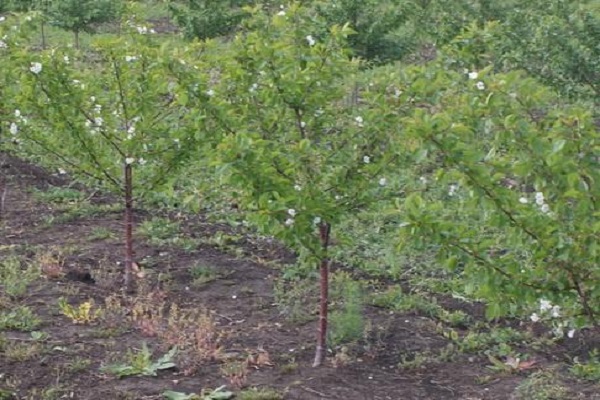
Stone fruits are often infected with fungi that cause coccomycosis. Diseased trees develop brown dots that spread to the fruit, and they turn black and dry. To prevent the occurrence of dangerous diseases in cherries, spraying the leaves with Bordeaux liquid, treatment with the fungicide "Skor" after the inflorescences fall, helps to prevent the occurrence of dangerous diseases in cherries.
Garden trees suffer from the invasion of weevils, aphids, moths.To combat parasites in early spring, use "Nitrafen" or "Actellik".
So that young plants are not damaged by rodents, for the winter, the trunks are wrapped with synthetic fabric or covered with pine needles.
